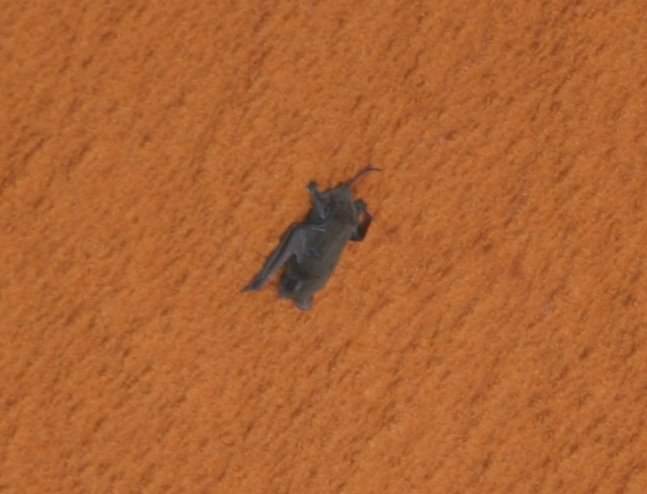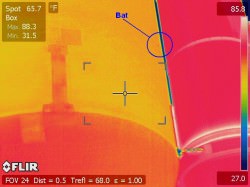

The injured long-tailed bat clings onto Discovery's external fuel tank (NASA)
[/caption]On Sunday, Space Shuttle Discovery lit up the Florida evening skies, cutting through a magnificent sunset. The STS-119 mission is set to assemble the final stages of the International Space Station’s solar array, making the outpost the second brightest object in the night sky (after the Moon). Today, Discovery successfully docked with the space station and all is set for the upcoming spacewalks.
However, space launch successes to one side, there has been an undercurrent of concern captivating the world. On Sunday, the shuttle had a stowaway attached to the external fuel tank, and although NASA was sure the little animal wouldn’t be a debris risk, the bat remained attached to the shuttle, apparently stuck in place. New details have now emerged about why the bat didn’t fly away before Discovery launched…


However, during coverage of the shuttle launch, it became clear the bat was still roosting and some theories pointed at the possibility that the creature had become frozen to the tank as the cryogenic hydrogen and oxygen fuel was pumped into the external tank. However, the area where Brian was located (yes, I felt compelled to name him when chatting on Twitter about the situation), was not expected to drop below freezing. On watching Discovery blast off, the assumption was that Brian (then thought to be a fruit bat, he was in fact a Free-tailed bat) had long gone. How wrong we were.
This morning, images of Discovery’s launch surfaced and it would appear the bat remained attached to the fuel tank even when the shuttle passed the height of the launch tower. The bat was in it for the duration, he seemed determined to be the first bat in space!
A sad reminder that small animals can be hurt and killed on the ground as we push into space. However, NASA goes through great effort to ensure there is minimal impact on birds and other animals during launches, and NASA can’t be blamed for the death of this one bat. At the end of the day, previous experience suggested the bat would simply fly away, unfortunately in this case, a broken wing was the bat’s downfall.
Sources: Space.com, NASA, Astroengine.com
The current exoplanet census contains 5,832 confirmed candidates, with more than 7,500 still awaiting confirmation.…
Is it possible to understand the Universe without understanding the largest structures that reside in…
Asteroid sampling missions are getting increasingly complex. Recent announcements about the existence of amino acids…
What happens when one galaxy shoots a bigger galaxy right through the heart? Like a…
The ESA's Gaia mission mapped the positions and velocities of stars with extreme precision by…
At first glance the large scale structure of the Universe may seem to be a…